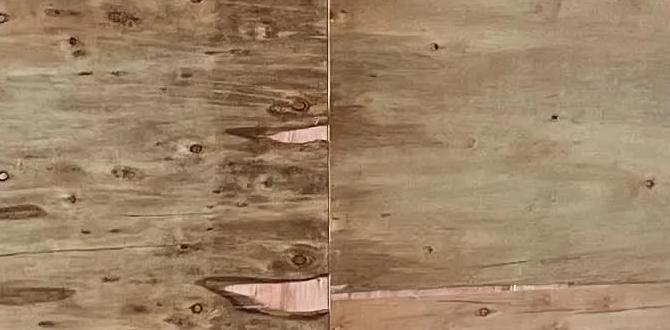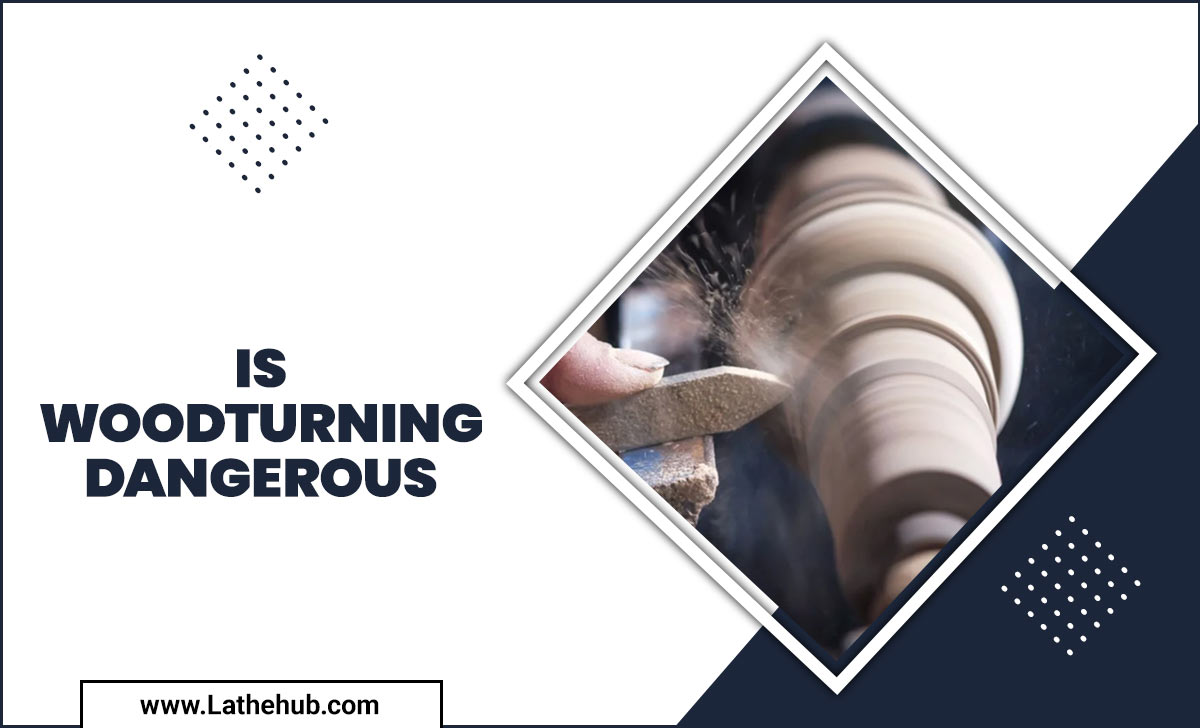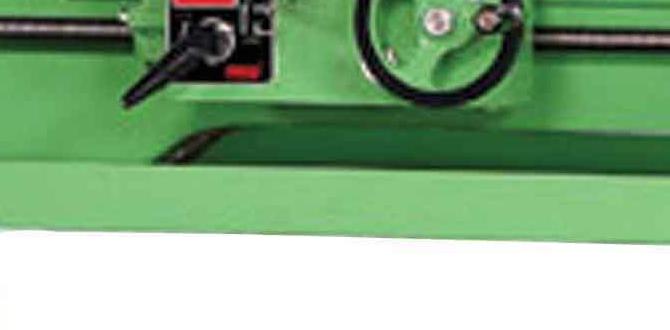Carbide bits for lathe machines are essential, super-sharp cutting tools that make tough materials easy to machine, saving you time and effort. They’re a game-changer for any home workshop, allowing for faster, cleaner cuts with less hassle.
Welcome to Lathe Hub! If you’re just starting out with your lathe, you might be feeling a little overwhelmed by all the different cutting tools. Don’t sweat it! We’re going to walk through one of the most game-changing discoveries you’ll make: carbide bits for your lathe. These little powerhouses can make shaping metal and even some hardwoods feel like a breeze. They cut faster, last longer, and let you achieve professional-looking results with less struggle. Stick around, and we’ll demystify these “genius essentials” and show you how they can transform your projects.
What Exactly Are Carbide Bits for Lathes?
Think of carbide bits as the superheroes of lathe cutting tools. They’re not made of traditional tool steel. Instead, they use a special material called tungsten carbide. This is a super-hard compound, often mixed with cobalt and sintered (baked under pressure) into a solid shape. This makes them incredibly tough and able to withstand the intense heat and force generated when cutting materials like steel, aluminum, brass, and even some very hard plastics and exotic woods. Because they’re so hard, they can cut much faster than high-speed steel (HSS) bits and hold an edge for a significantly longer time.
Why Are Carbide Bits a “Genius Essential” for Beginners?
For beginners, the lathe can feel like a tricky beast. You’re learning to control speed, feed, and depth of cut, all while making something useful or beautiful. Traditional HSS tools can work, but they often require frequent sharpening, can be tricky to get really sharp, and might soften if you run them too hot. This is where carbide bits truly shine as a “genius essential”:
Durability and Longevity: Carbide bits practically laugh at wear and tear. They stay sharp much longer than HSS, meaning fewer tool changes and less time spent grinding or honing. This is a huge win when you’re still getting the hang of tool setting and cutting techniques, as it reduces one variable in the learning process.
Speed and Efficiency: Because they’re so hard, carbide bits can cut at much higher speeds. This means faster machining times, getting your projects done quicker. For hobbyists with limited workshop time, this is a valuable advantage.
Tough Material Mastery: Working with harder metals or even dense hardwoods can be a real challenge for less robust tools. Carbide bits cut through these materials with surprising ease, producing smoother finishes and requiring less force. This opens up a wider range of project possibilities for beginners.
Reduced Sharpening Hassle: While carbide bits can be sharpened, it’s a specialized process typically done with diamond abrasives. For many beginners, it’s more economical and practical to replace the carbide insert when it dulls, rather than investing in specialized sharpening equipment and learning a new skill right away. This keeps your focus on learning the lathe itself.
Consistent Results: The hardness and sharpness of carbide bits lead to more predictable and consistent cuts. This can boost your confidence as you start seeing good results from your efforts, making the learning curve feel less steep.
Understanding Carbide Bit Types and Their Uses
Carbide bits for lathes aren’t just one monolithic thing. They come in different shapes, sizes, and with different types of carbide inserts. Understanding these will help you pick the right tool for the job.
Carbide Inserts vs. Solid Carbide Bits
The most common type of carbide tool you’ll encounter for lathes, especially in home workshops, is the tool holder with replaceable carbide inserts. This system consists of a steel body (the tool holder) that grips a small, precisely shaped piece of carbide (the insert).
Tool Holders: These are the reusable metal shanks that fit into your lathe’s tool post. They have a mechanism (like a screw or clamp) to hold the carbide insert securely. They come in various angles and configurations to suit different operations like turning, facing, and grooving.
Carbide Inserts: These small, often multi-sided pieces of carbide are the actual cutting edges. When one side becomes dull, you simply loosen a screw, flip the insert to a fresh edge, or replace it with a new one. This is a massive advantage for beginners as it means no complex tool grinding.
Solid carbide bits are also available. These are ground from a solid piece of tungsten carbide. They are extremely rigid and can achieve very fine finishes but are also much more brittle. If dropped or subjected to excessive shock, they can chip or break. They are typically used for specific applications, often in smaller sizes or for very delicate work, and are less common for general beginner use due to their fragility.
Common Carbide Insert Geometries and Their Functions
Carbide inserts come in a variety of shapes, each designed for a specific purpose. The shape is often indicated by a code, but for beginners, understanding the basic profile is key.
Square Inserts (SNMG, CNMG, TNMG): These are very versatile. With their four cutting edges, they’re great for general turning (reducing diameter), facing (making the end flat), and chamfering (adding a bevel). Their sharp corners can get close to chuck jaws or tailstock centers.
Diamond Inserts (DCMT, SCMT): These often have a 55° point angle (or 80° for some). They are excellent for profiling, grooving, and general turning. The sharp point allows for detailed work.
Round Inserts (RNG, RNMG): These are ideal for roughing cuts where you need to remove a lot of material quickly. The rounded corner distributes the cutting forces over a larger area, making them very strong and resistant to chipping. They leave a wavy surface finish, but this can be cleaned up with a finishing pass.
Triangle Inserts (TCMT, TPG): These have a 60° point angle and are good for chamfering and general profile work where a sharper angle is needed.
Carbide Grades: The Invisible Difference
Carbide isn’t just carbide. It’s made up of tungsten carbide particles mixed with a binder, usually cobalt. The size of the carbide particles and the amount of cobalt affect the insert’s properties.
C-Grades (Coated Carbide): For general machining of steel, cast iron, and some alloys, you’ll often see inserts designated with a “C” prefix, like C2, C5, or C7. These are for cemented carbides.
C1-C4 (K grades): These are general-purpose carbides with larger grain sizes, making them tougher and more resistant to chipping. They are good for slower speeds and interrupted cuts, which might be common for beginners.
C5-C7 (P grades): These have finer grain sizes and are harder, allowing for faster speeds and smoother finishes, especially on continuous cuts in steel and non-ferrous materials.
K-Grades: Generally for softer materials like aluminum, brass, and plastics. They’re often uncoated and have a polished surface to prevent material buildup.
M-Grades: For stainless steels and exotic alloys.
Coated Inserts: The most common type for beginners are coated carbide inserts. A thin layer of a hard material like Titanium Nitride (TiN), Titanium Carbonitride (TiCN), or Titanium Aluminum Nitride (TiAlN) is applied to the surface. This coating does several things:
Increases hardness: Makes the cutting edge even harder.
Reduces friction: Helps chips flow away more easily, reducing heat buildup.
Acts as a thermal barrier: Protects the carbide substrate from extreme heat.
Improves tool life: Significantly extends how long the insert lasts.
For most beginner metalworking projects on steel and aluminum, a general-purpose, coated carbide insert (like a P20 or P30 grade, or often colored red or blue) is a fantastic starting point. uncoated carbides are often used for aluminum and plastics.
Essential Carbide Tool Holders and Inserts for Your Lathe
To get started with carbide bits, you don’t need a whole arsenal. A few versatile tool holders and a selection of common inserts will cover a vast majority of beginner tasks.
Recommended Tool Holders
The key is to get a set that matches your lathe’s tool post size. Common sizes are 1/2 inch (for smaller benchtop lathes) and 5/8 inch or 3/4 inch (for larger or more robust machines). Look for a set with a positive rake angle; these are more forgiving for beginners.
Here are a few essential types of tool holders:
Right & Left Hand Turning Holders: These hold the insert for cutting from right to left and left to right along the workpiece. You’ll need at least one of each for general turning.
Facing Holder: Designed to hold an insert for facing operations, allowing you to get a clean flat surface on the end of your workpiece.
Internal Boring Bar Holder: For boring holes to size from the inside. These are often smaller diameter bars designed to fit into the workpiece.
Grooving/Cut-off Tool Holder: Specialized holders for cutting grooves or parting off your workpiece.
A good starter set might include:
One right-hand external turning holder.
One left-hand external turning holder.
One general-purpose internal boring bar holder.
One grooving/cut-off tool holder.
Recommended Carbide Inserts
For general-purpose external turning and facing of mild steel and aluminum, a good starting point is a pack of coated carbide inserts in a common geometry.
General Turning: Square inserts with a slightly rounded corner (like CNMG 432 or TNMG 432) are perfect. The “432” refers to the dimensions: a 4 is about 1/2 inch edge length, a 3 is about 3/16 inch thick, and the last 2 is about 1/32 inch nose radius. A small nose radius (like R2 or R3 – 1/32″ or 3/32″) is good for general work. For even better finishes on steel and aluminum, uncoated inserts in a K-grade (e.g., K20 or K30) or PCBN (polycrystalline cubic boron nitride) for ceramics are very efficient as well.
Finishing: For a super-smooth finish, you might want a specific finishing insert with a larger nose radius (e.g., R8 – 1/4 inch radius) or specialized corner geometry.
Grooving/Cut-off: You’ll need specific inserts for these tasks. Standard cut-off inserts are thin and designed to plunge straight into the material. Grooving inserts come in various widths.
Example Starter Pack (for steel and aluminum):
10x CNMG 432 (or TNMG 432) coated carbide inserts: General turning, facing, chamfering.
5x Cut-off Insert: For parting off stock.
5x Grooving Inserts: In a common width like 1/8 inch or 3mm.
You can buy these in sets from reputable tool suppliers. Many sets are color-coded or have clear descriptions for the materials they are best suited for.
Where to Buy Carbide Bits
Online Tool Retailers: Websites like Amazon, eBay, McMaster-Carr, MSC Industrial Supply, and many dedicated machining tool sites offer a huge selection. Be sure to check reviews and seller reputations.
Local Machine Shops: Some local shops may carry a small selection, or can point you to a good supplier.
Hobbyist Lathe Suppliers: Companies that sell lathes often sell recommended tooling packages.
Remember to match your insert pocket geometry to your tool holder! For example, a CNMG insert fits in a CNMG holder.
How to Use Carbide Bits Safely and Effectively on Your Lathe
Using carbide tools is generally straightforward, but a few key points will ensure you get the best results and stay safe.
1. Setting Up Your Tool Holder and Insert
Mounting the Tool Holder: Securely clamp the tool holder in your lathe’s tool post. Ensure it’s at the correct height – generally, the cutting tip of the insert should be dead center with the spindle’s rotation axis. Too high or too low can cause chatter, poor finish, or even tool breakage.
Installing the Insert: With the tool holder loosely clamped, insert the carbide bit into the pocket. Make sure it sits flat and faces the correct direction for cutting. Tighten the clamp screw or lever firmly but don’t overtighten. Overtightening can chip the carbide.
Tool Engagement: For most operations, the tool should be set so that the flat of the insert is presented to the work, not a sharp corner for initial engagement. Use the tool holder’s geometry (positive or negative rake) to your advantage. Positive rake holders are more forgiving.
Clearance: Ensure there’s enough clearance for the insert’s flanks, so only the cutting edge is engaged.
2. Choosing the Right Speed and Feed Rate
This is crucial for cutting with carbide.
Speed: Carbide bits excel at high speeds. For mild steel on a typical benchtop lathe, you might be running at 500-1500 RPM or even higher, depending on the diameter and insert. For softer materials like aluminum, you can often go even faster. Always start conservatively and listen to the machine. If it sounds smooth, you’re likely in a good range.
Feed Rate: This is how fast the tool moves along the workpiece. For a good finish, use a moderate to fine feed rate (e.g., 0.004″ to 0.010″ per revolution). For heavy roughing, you can push it faster (0.015″ to 0.025″ or more) if your machine is rigid and the carbide insert (like a round-nose) is up to the task.
Depth of Cut: Carbide can handle significant depths of cut. For roughing, you might take 0.1″ to 0.2″ off the diameter (0.05″ to 0.1″ per side). For finishing, aim for very light cuts, perhaps 0.005″ to 0.010″ off the diameter.
General Guidelines Table (Approximate – always test and listen!):
| Material | Operation | Insert Type | Spindle Speed (RPM) | Feed Rate (IPR) | Depth of Cut (in) (per side) | Notes |
| :————– | :————- | :—————— | :—————— | :————– | :————————— | :————————————- |
| Mild Steel | Rough Turning | Coated CNMG/TNMG | 500 – 1000 | 0.010 – 0.020 | 0.100 – 0.125 | Listen for chatter; adjust as needed. |
| Mild Steel | Finishing Turn | Coated CNMG/TNMG | 800 – 1500 | 0.004 – 0.008 | 0.010 – 0.020 | Aim for a smooth surface. |
| Aluminum | Rough Turning | Uncoated K-Grade | 1000 – 2500 | 0.008 – 0.015 | 0.100 – 0.150 | Use sharp, polished inserts for best finish. |
| Aluminum | Finishing Turn | Uncoated K-Grade | 1500 – 3000 | 0.003 – 0.006 | 0.005 – 0.010 | Can achieve mirror finishes. |
| Brass | General | Uncoated K-Grade | 1000 – 2000 | 0.005 – 0.010 | 0.050 – 0.075 | Avoid buildup with sharp tools. |
IPR = Inches Per Revolution
Important Note: These are starting points. Actual speeds and feeds depend on your lathe’s rigidity, spindle taper, insert coating, workpiece material variations, and desired surface finish. Always start slower and increase gradually while observing the cut.
3. Coolant and Lubrication
While carbide can handle heat better than HSS, using cutting fluid or coolant is still highly recommended.
Benefits of Coolant:
Reduces Heat: Keeps the insert and workpiece cooler, extending tool life and preventing workpiece distortion.
Lubricates: Reduces friction between the chip and the insert, leading to a better finish and easier chip flow.
Flushes Chips: Helps carry chips away from the cutting zone, preventing recutting and potential tool damage.
Types of Coolant:
Soluble Oil: The most common type for general machining. It mixes with water.
Synthetics: Offer good cooling but less lubrication.
Straight Oils: For very tough materials or specific operations.
Air/Mist Coolers: For lighter cuts or when flood coolant is impractical.
Application: Apply coolant directly at the cutting zone. For beginners, using a spray bottle of cutting fluid for manual application is a good start. For more advanced setups, a drip system or flood coolant system is ideal.
4. Chip Management
Carbide bits produce chips relatively quickly. Proper chip management is essential for safety and a good finish.
Observation:





